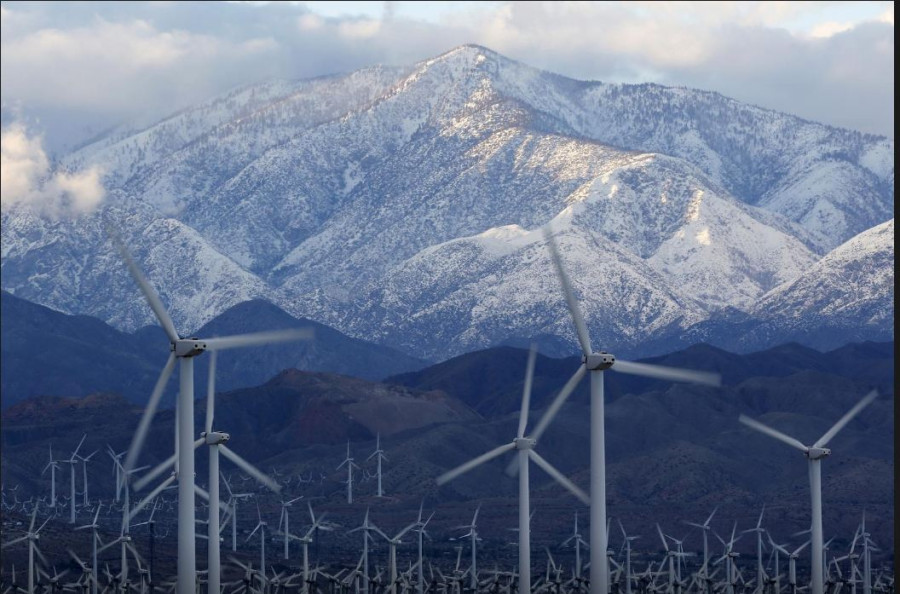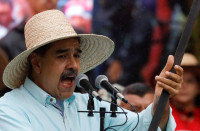World
US seeks to polish tarnished reputation with new climate change pledges ahead of Earth Day
The Biden administration has been laying the groundwork for its new target, unveiling a $2 trillion infrastructure package to expand clean energy and transport.
Reuters
The United States hopes to restore its shattered credibility when it hosts a climate change summit next week by pledging to cut its greenhouse emissions by at least half and securing agreements from allies for faster reductions, according to two sources familiar with the matter.
A 50% reduction from 2005 levels by 2030 is a minimum level urged by environmental groups, hundreds of corporations and European Union lawmakers. It would be the first upgrade of the US climate target since 2015, when former President Barack Obama pledged a 26%-28% reduction by 2025.
Washington was also close to clinching deals with the governments of Japan, South Korea and Canada to accelerate their targets to decarbonize, the two sources said. It was not immediately clear if those nations would make announcements at the event, and representatives of those countries have not commented on the discussions.
The stakes for the meeting are high. Leaders from roughly 40 countries including China, India, Brazil and Russia have been invited, with hopes they will double down on past pledges to reduce climate warming emissions. So far, international pledges to decarbonize would shave only 1% off global emissions by 2030 compared with 2010 levels, a fraction of what scientists say is needed to avert the worst impacts of climate change.
The virtual summit on April 22-23, kicking off on Earth Day, will be an opportunity for Democratic President Joe Biden to reclaim US leadership in global climate efforts, after four years during which his predecessor, Republican Donald Trump, downplayed the issue to support the oil and coal industries.
Biden’s climate envoy, John Kerry, has spent the last few months on countless Zoom appearances and on a globe-hopping tour, concluding this week in China and South Korea, to persuade countries to use next week’s summit to hike their commitments to protect the planet.
The Biden administration has been laying the groundwork for its new target, unveiling a $2 trillion infrastructure package to expand clean energy and transport.
The European Union last year agreed to reduce its net emissions at least 55% by 2030 from 1990 levels - currently the most ambitious among big emitters.
“If we are to fight climate change, there’s no way around getting the biggest emitters to take leadership. All of them,” Denmark’s climate minister Dan Jorgensen told Reuters.
Patience wearing thin
Next week’s US summit is the first in a string of meetings of world leaders - including the G7 and G20 - ahead of the United Nations climate summit in November, known as COP26. That serves as the deadline for nearly 200 countries to update their climate pledges under the Paris Agreement, an international accord set in 2015 to combat global warming.
But as global powers tussle over percentage points, in countries already facing the impacts of a warming world, patience is wearing thin.
Developing countries – many of which are vulnerable to rising seas, heatwaves and rainfall made more severe by climate change – are expected to offer their own goals at the summit, said Pablo Vieira, director of the NDC Partnership, which has been helping developing nations craft their climate targets.
They will also repeat their demand that rich nations offer more money to help them cut emissions and adapt to the impacts it is already unleashing in countries like Bangladesh, South Sudan and the Marshall Islands.
You are all invited
US talks with Japan, South Korea and Canada have focused on trying to get each country to commit to cut emissions at least 50% by 2030, according to the two sources familiar with the US negotiations.
Japan and South Korea both rely on coal for power generation and winding that dependence down and their finance of coal plants abroad could yield significant emissions cuts in the next 10 years, the sources said.
Canada may have a tougher challenge.
“We don’t have quite that luxury here because coal is a much smaller part of our grid,” Canada’s Environment Minister Jonathan Wilkinson said. But he added: “We are working to stretch as far as we can.”
Canada, which has a large oil industry, currently has a target to cut emissions 30% below 2005 levels by 2030.
Other major emitters appear less keen to take the plunge, including India, China, Brazil and Russia.
India, the third-largest emitting country behind China and the United States, is resisting because it expects more developed nations to take on the bulk of global reductions.
“What we are suffering today is caused a 100 years ago,” said Prakash Javadekar, India’s Minister of Environment, Forest & Climate Change, pointing to emissions from the United States and Europe. “Historical responsibility is a very important aspect. We cannot just forget it.”
China’s special climate envoy, Xie Zhenhua, was meeting with Kerry in Shanghai this week to discuss climate change, the foreign ministry said. China promised last year that its greenhouse gas output would peak by 2030, a target environmental groups say is insufficient.
US and Brazilian officials, meanwhile, have been working since February on a billion-dollar deal to fund Brazil’s protection of the Amazon rainforest, but diplomatic sources said a deal is unlikely by April 22.
Russia, another big emitter, has not yet confirmed if President Vladimir Putin will participate in the summit. With Moscow’s ties with the West at a post-Cold War low, the US summit has generated little buzz in Russia.




 8.12°C Kathmandu
8.12°C Kathmandu





.jpeg&w=300&height=200)








